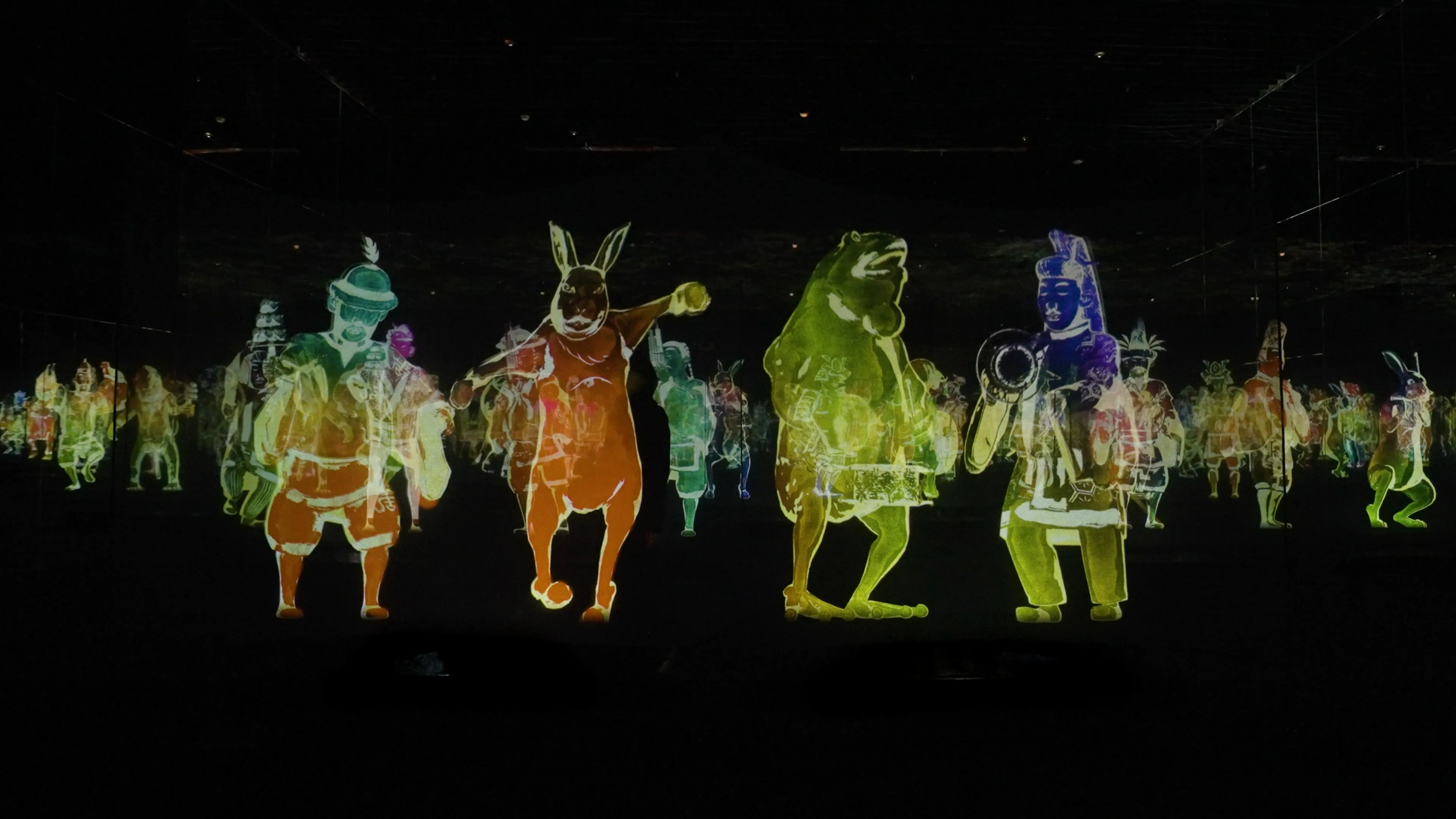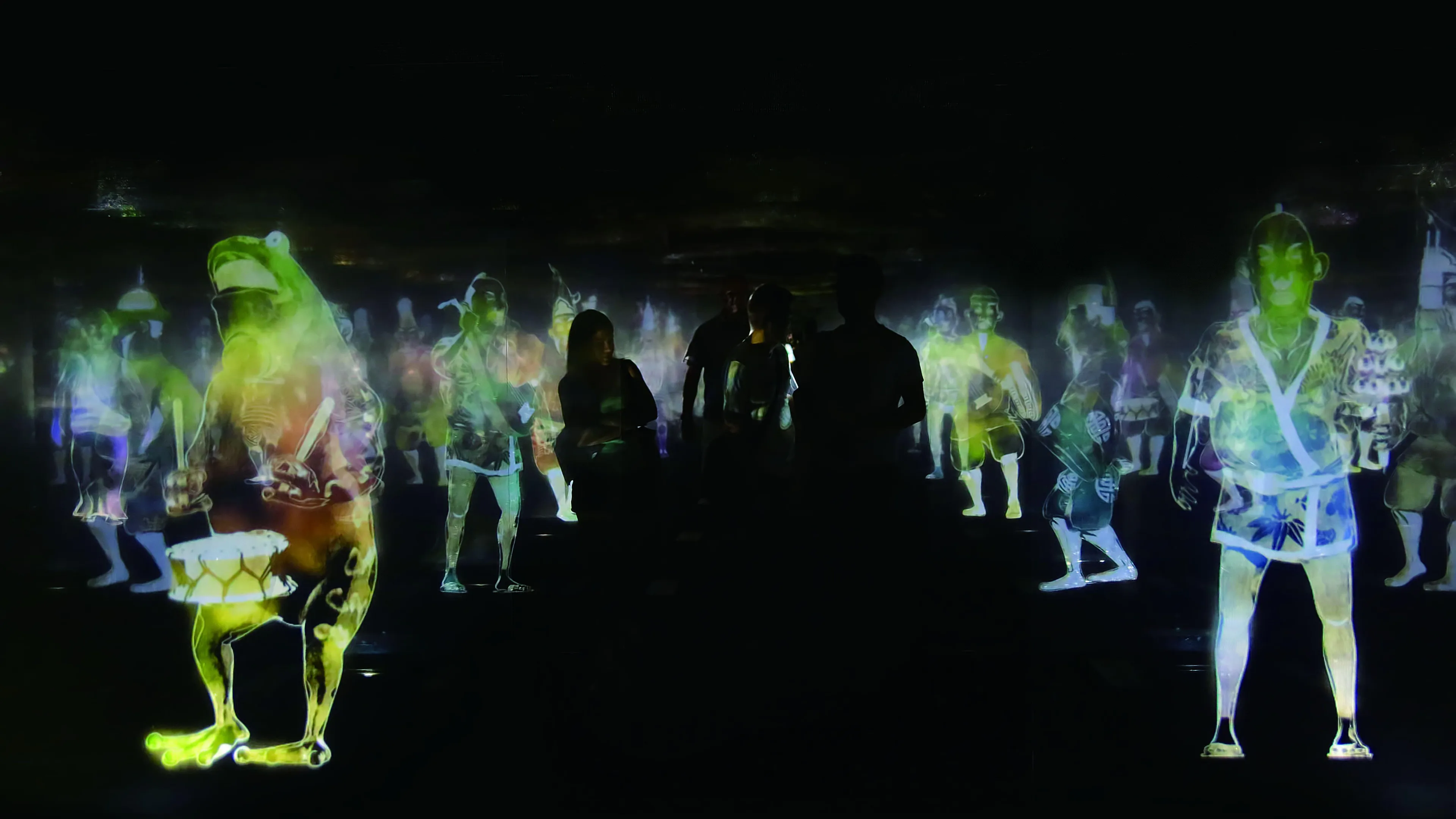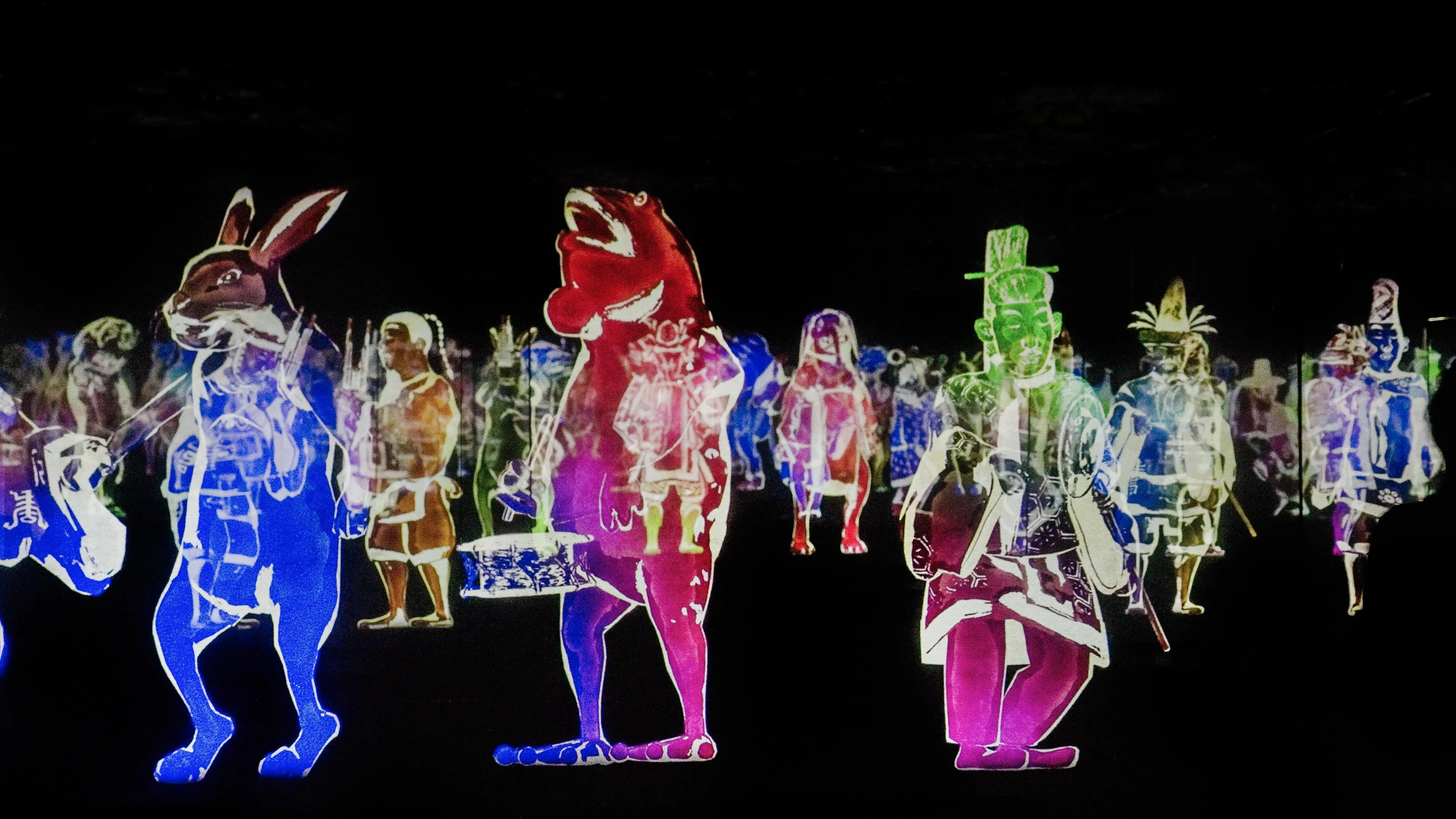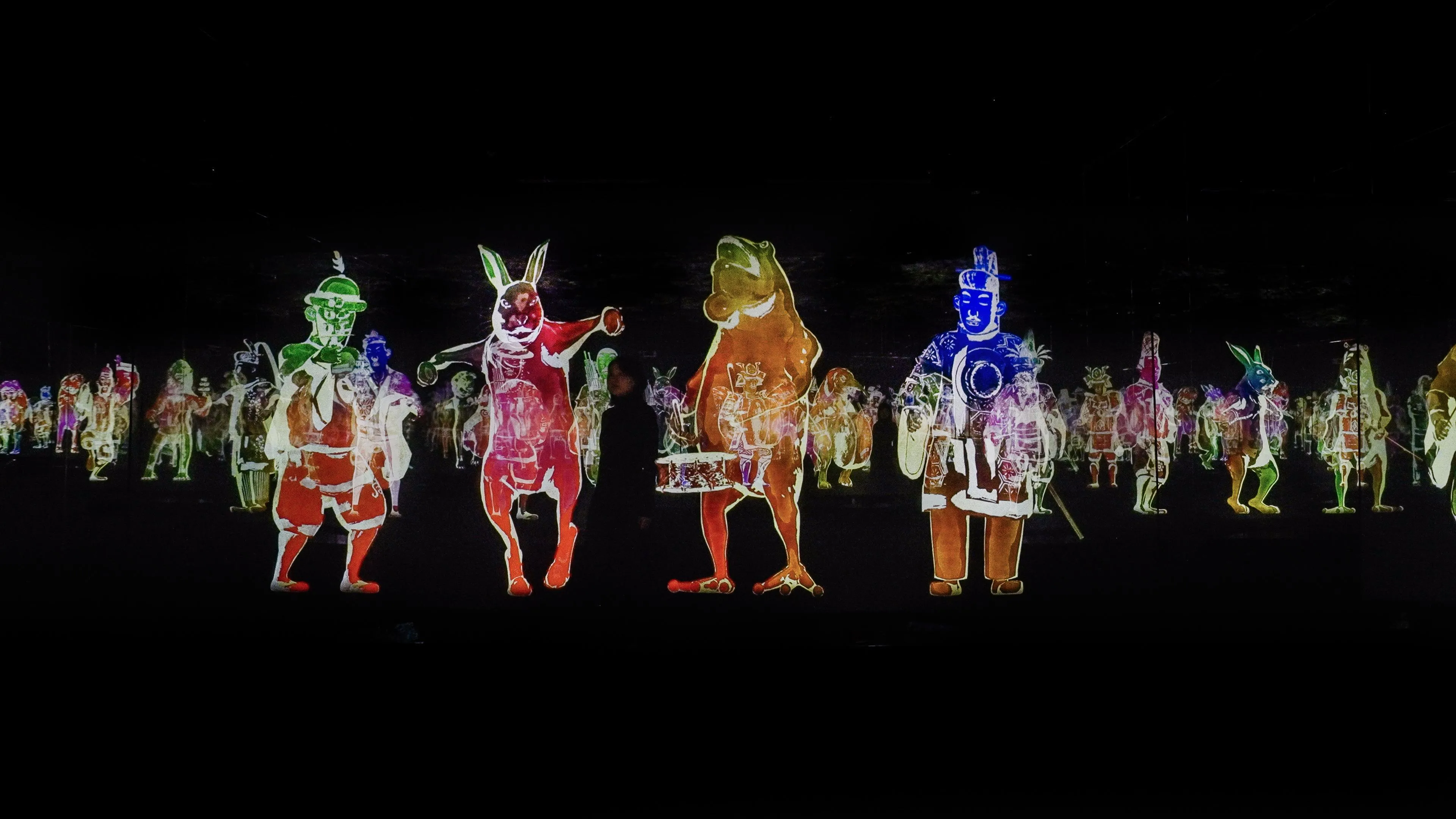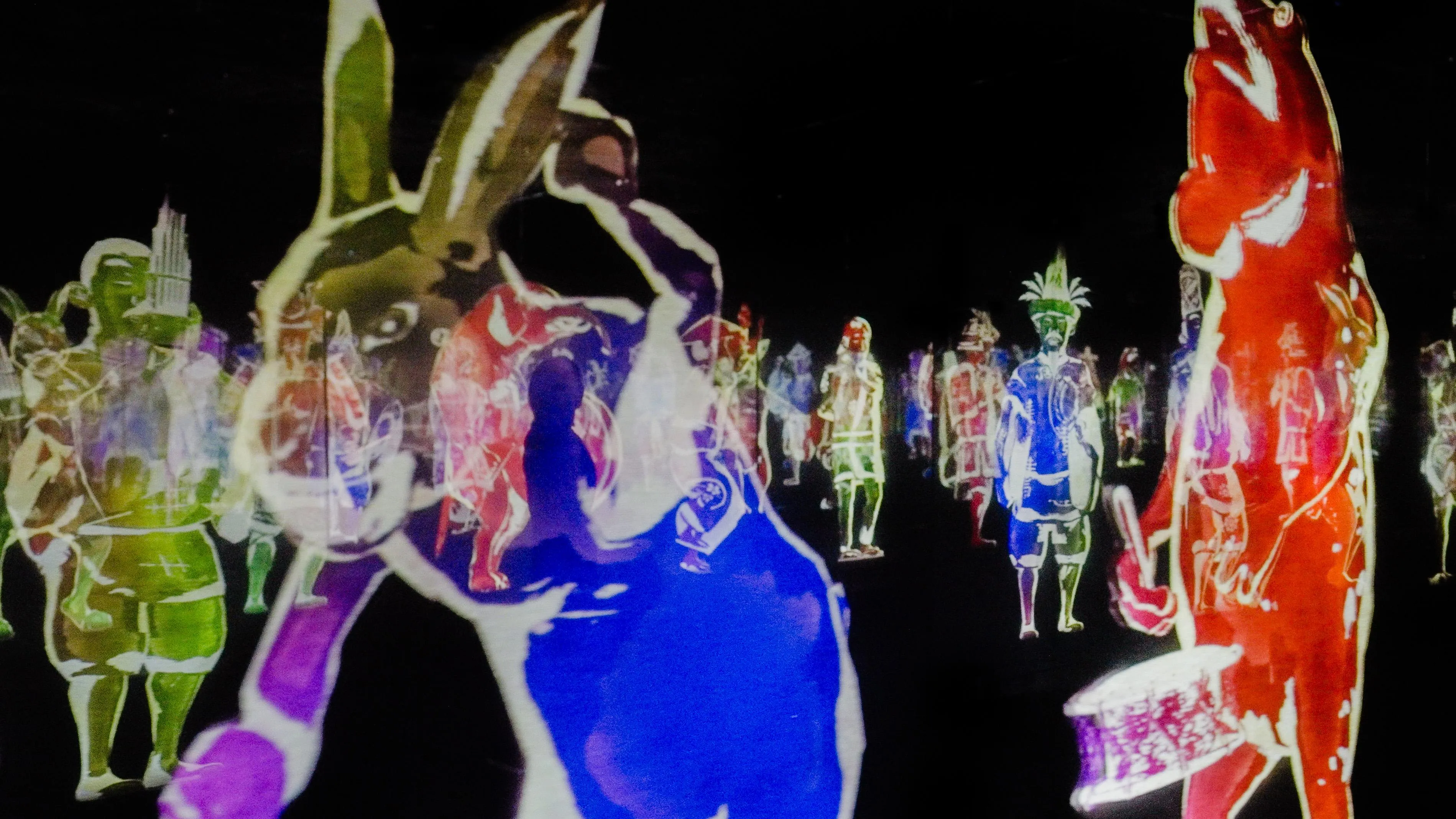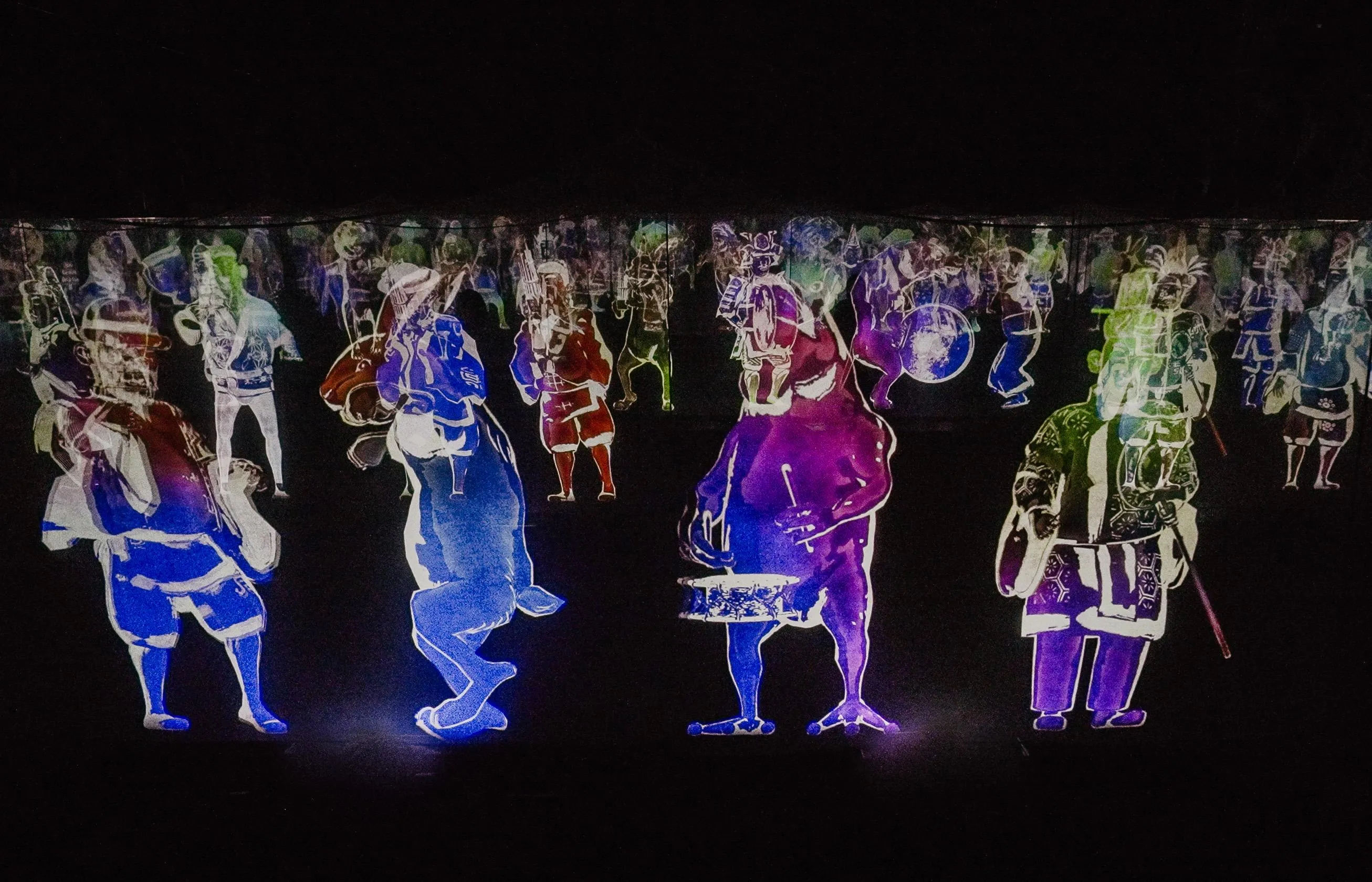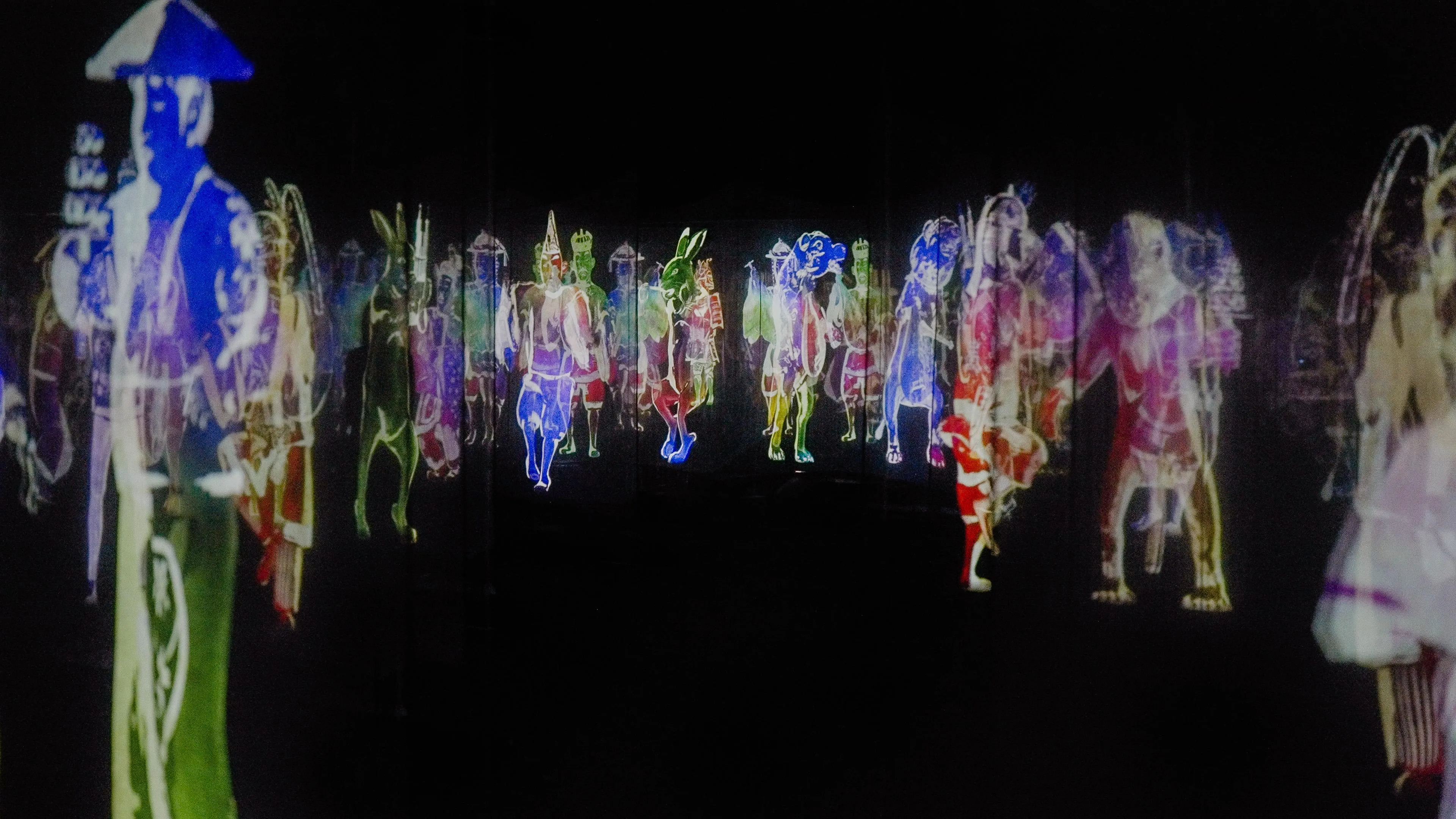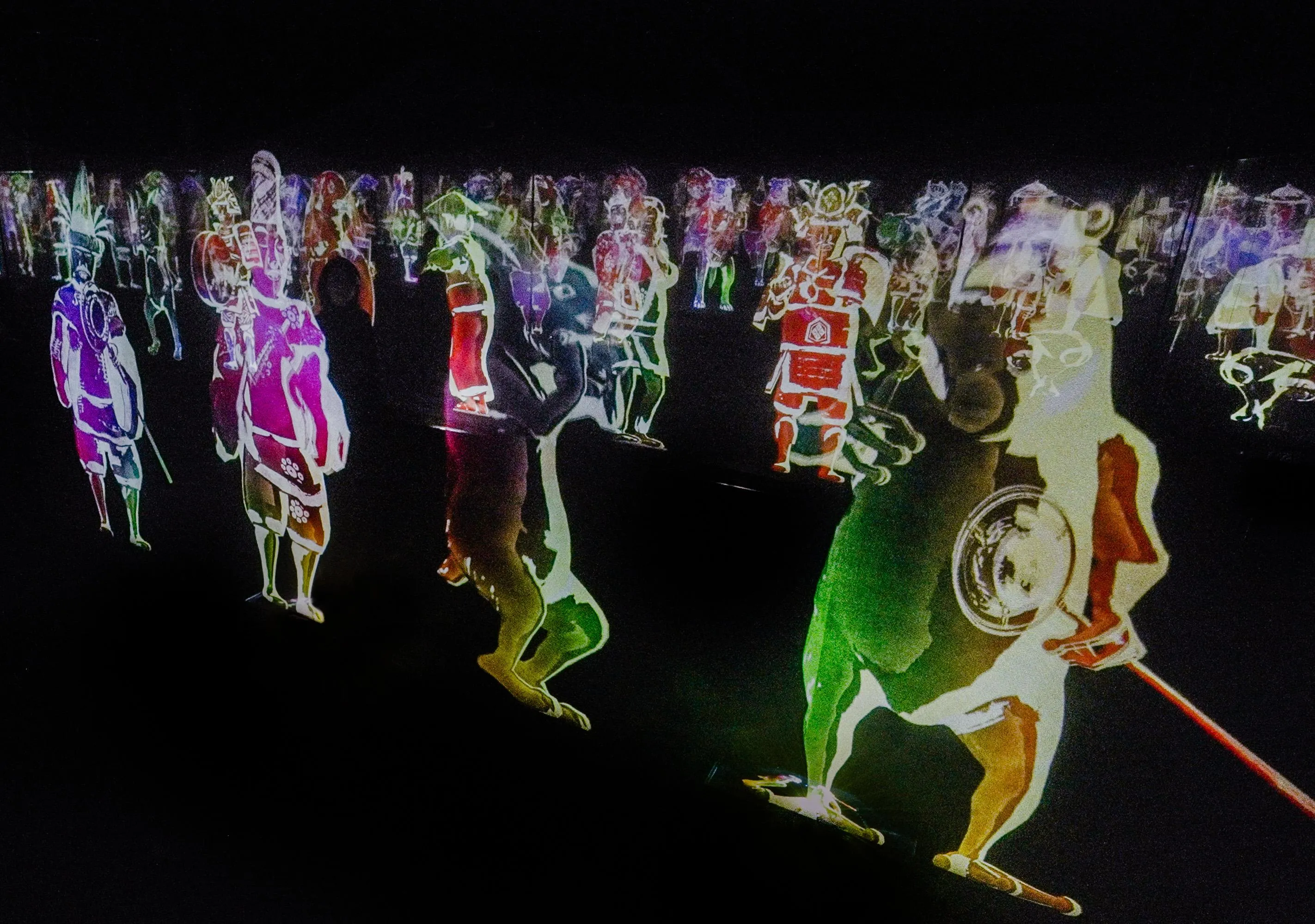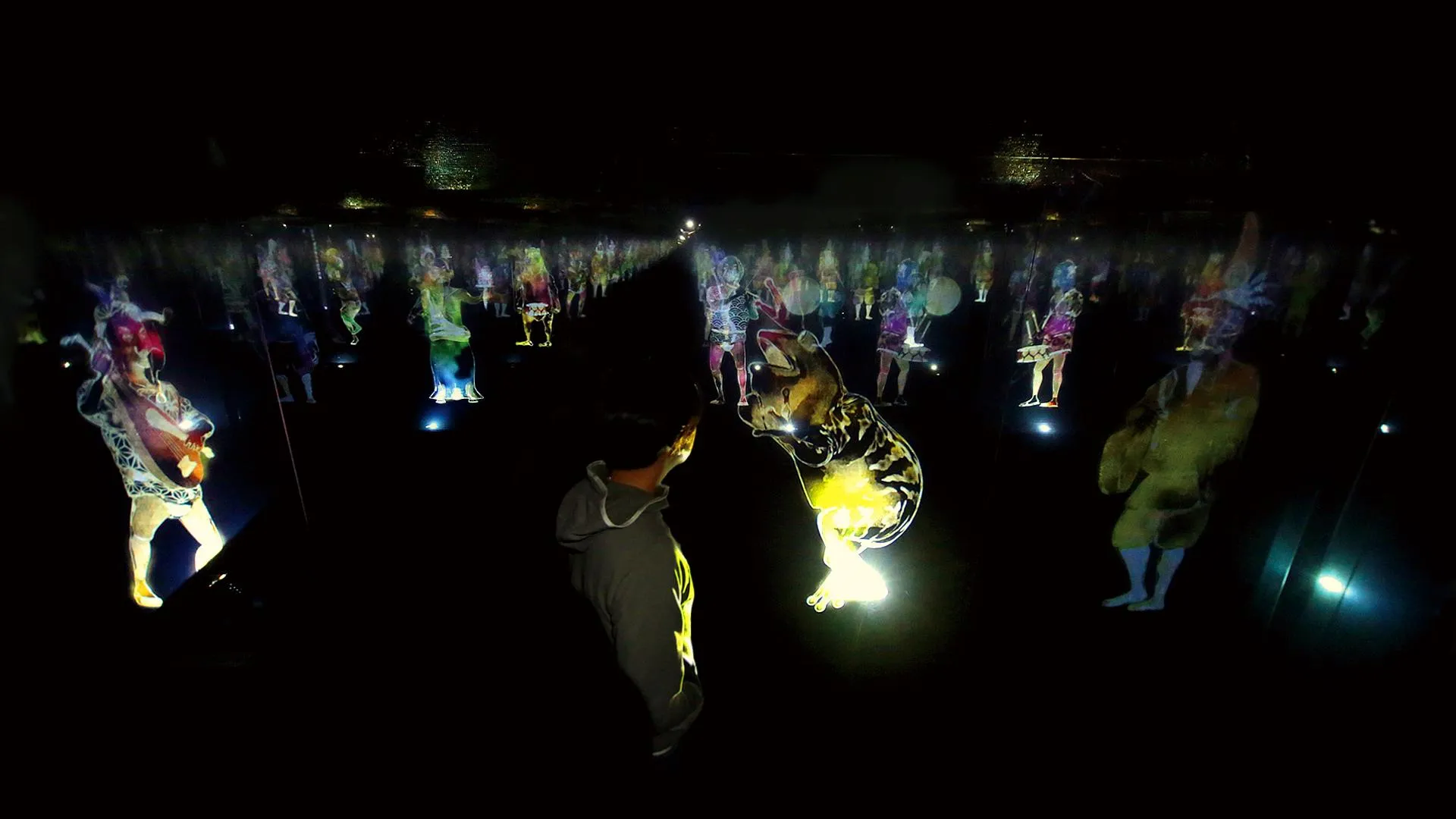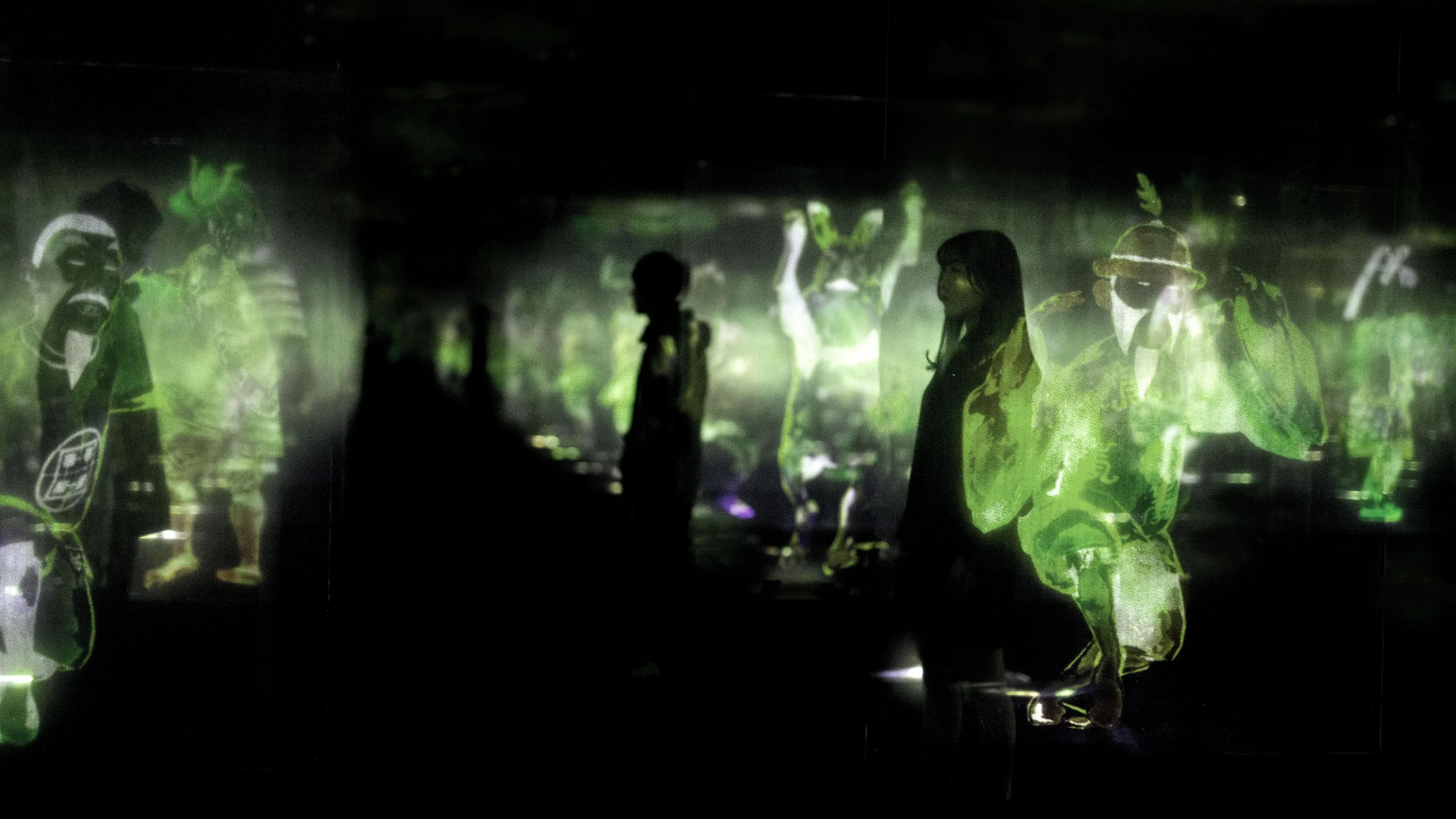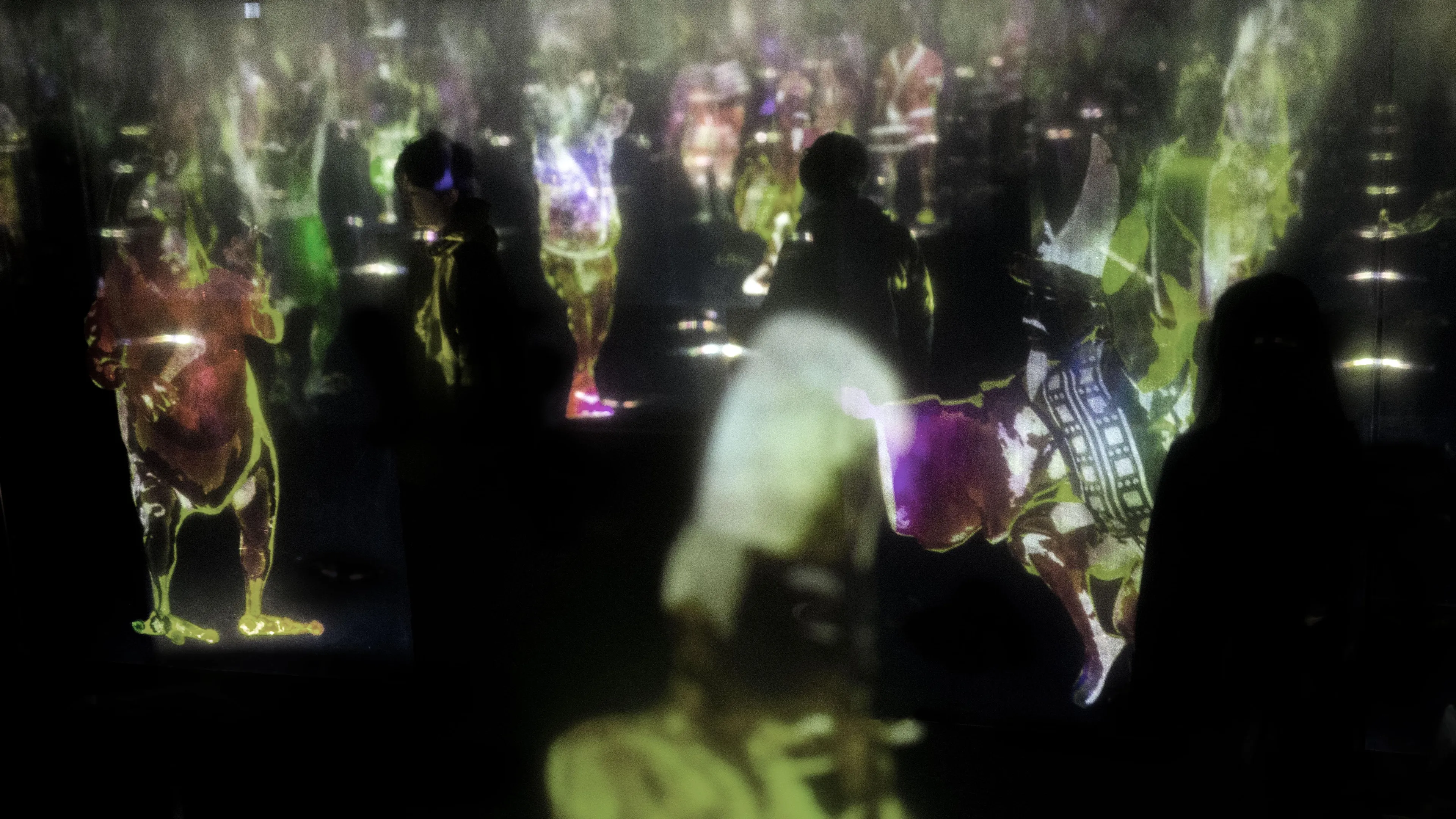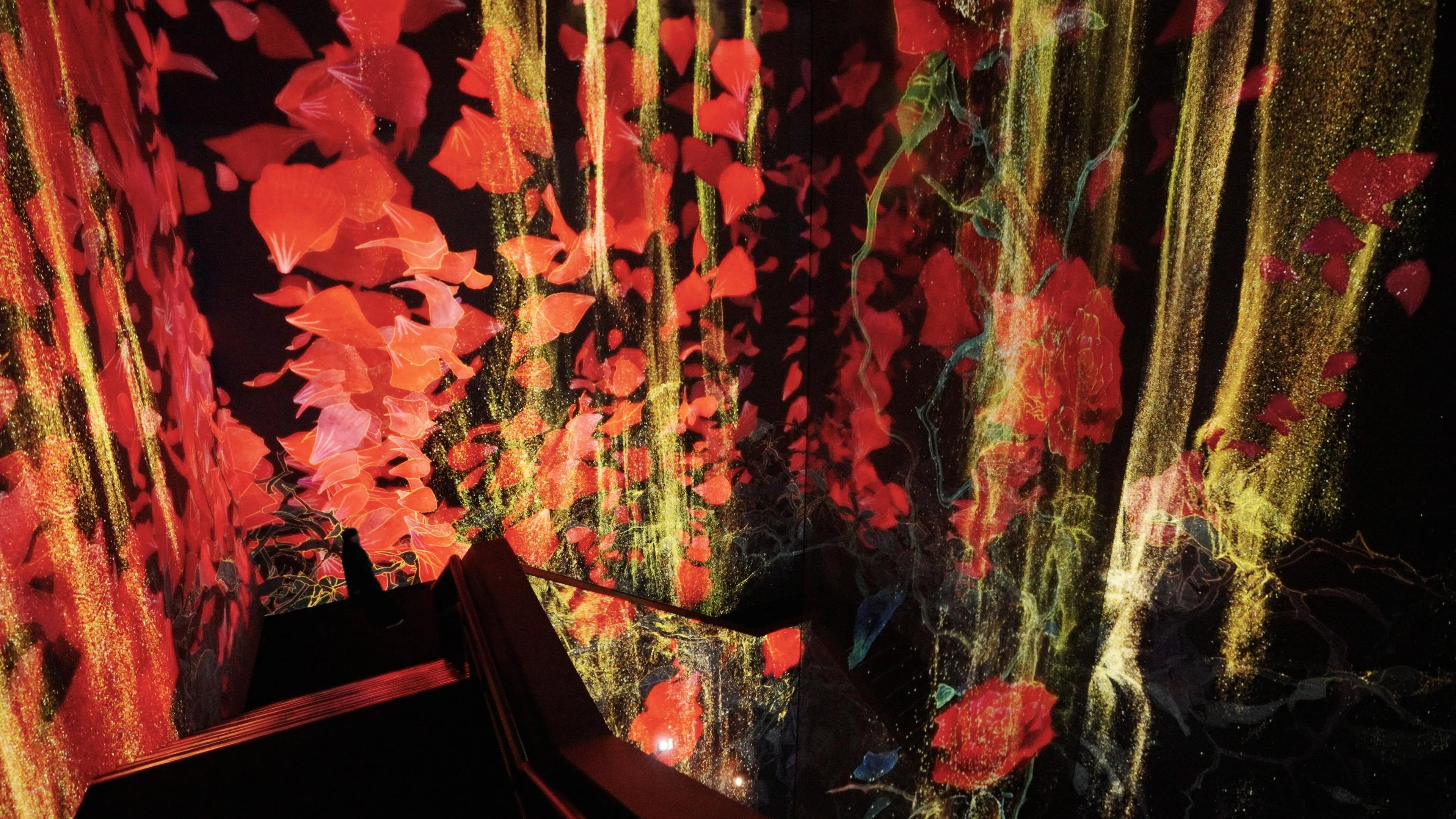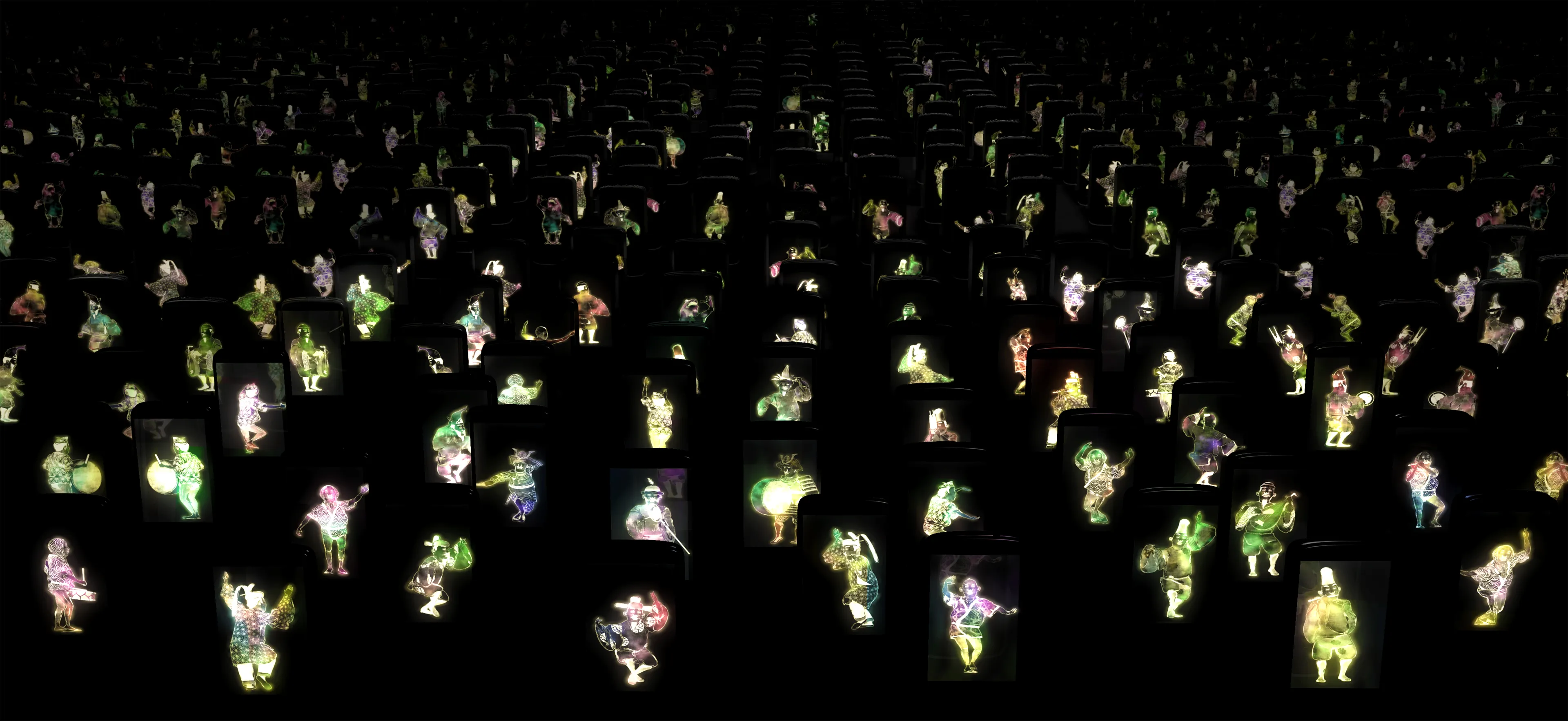ART & TECHNOLOGY #4: teamLab
At a conference last year at the Mori Art Museum on the subject of internationalism in contemporary art, scholar Michio Hayashi theorized that the popular perception of “Japanese-ness” in the West was cemented in the 1980s by triangulating “kitsch hybridity,” “primordial nature” and “technological sophistication.” 1) Today, popular (especially commercially) contemporary art from East Asia can largely be placed somewhere inside that triangle. Recent exhibitions in Europe and the United States featuring Asian artists certainly fit the triangulation formula, exhibiting themes of technological futures.
1) Ryan Wong “Kitsch, Myth, and Technology: Japanese Art in the West” 『Hyperallergic』 2014. 8. 5teamLab has become quite a prominent group in both the East and the West, via the technological sophistication and the presentation of works that condense characteristics associated with contemporary art in Asia. Presented in Chelsea at the “Duality of Existence” exhibition last year, Crows are Chased and the Chasing Crows are Destined to be Chased as Well – Light in Dark (2014) was one such example. The seven-projector, seven-screen digital animation installation tailed the swerving flight of a succession of crows that left floral trails in their wake. Despite the colorful splashes, the panel screens presented a spectacle without story, a fantastic display of prismatic fireworks without emotional or narrative engagement. Animated with elements of epic films yet dense with a kitsch undertone, teamLab continues to put forth some of the most original contemporary art in recent years.
The Revolutionary Warping of an Analogue Motif
Setting sail on the tradition of 17th-century Japanese art and contemporary forms of anime, teamLab navigates the confluence of art, technology and design. Founded by Toshiyuki Inoko and a group of his university friends in 2001, teamLab works as a collective creative force to celebrate the vitality of nature and strive to expand our understanding of human perception. It is an interdisciplinary creative group that brings together professionals from various fields in the information age: artists, editors, programmers, engineers, mathematicians, architects, web and print graphic designers, and CG animators. They attempt to achieve a balance between technology, art, commerce and creativity, working within a broad creative range that encompasses animation, sound, performance, the Internet, fashion, design and even medical science.
An even higher superlative of technological sophistication is found in their 12-panel digital screen installation Flower and Corpse Glitch Set of 12 (2012). Like a parchment opening, the panels suggest a comprehensive narrative, yet there is no discernible logic of a unilateral direction of perception, be it horizontal or vertical. Each panel conveys a short chapter from what appears to be a tale of legends: dragons, samurais and beautiful mountains. Outlines and forms crumble, turning into digital grids, gold leafing assembling itself into a succession of subsequent scenes.
Traditional Japanese painting motifs in dazzlingly high-definition digital are animated, the loop clocking in just shy of two minutes. Despite the short runtime and lack of an apparent narrative, the immersive display never fails to capture an audience. Such were the reasons behind teamLab’s presentation garnering such praise at Art Basel Hong Kong in 2013, the inaugural edition following the Swiss exhibition’s acquisition of a majority stake in the Hong Kong fair.
Peace Can Be Realized Even Without Order (2013) is an interactive digital installation composed of holographic numbers. As the self-evident title states, the presentation tells the story of how despite disorder caused by external events, peace is gradually restored with time. Existing independently from the others surrounding it, holographic figures play instruments and dance, affected by the sounds coming from neighboring holograms. When a visitor steps across the threshold of the installation, the holographic figures respond by pausing their performance. As the first figure stills, the signal to ‘cease’ is relayed and spread to each other figure. After the visitor passes through the installation, the holographic figures return to playing music and dancing. It is the visitor’s entrance that causes the disruption of harmony. teamLab stated that “…the speed at which people can connect with other people has accelerated, and the influence of connections to other people has become more important…and perhaps in these unordered connections there is a way to find peace.”
Homogenizing and Transforming World is another installation in the same vein. Individual balls floating in space communicate wirelessly with each other. They change color and emit different sounds when touched by visitors or bumped by other objects. The first affected ball sends the new color information to others around it, the spread broadening until all the balls are once again the same color. We now live in a world that has ubiquitous connectivity to the Internet. Each individual is connected to other associates, and information is freely exchanged through that connection. Any single person becomes a voluntary information corridor, sending out new data that ultimately unifies the world. That world, created almost by an instantaneous transference, is what the installation by teamLab addresses.
Verification of Logic through Technique
teamLab’s interests reach beyond humanity, to nature and the great outdoors, and into outer space. Universe of Water Particles Under Satellite’s Gravity (2014) is an installation composed of a giant model of the ALOS-2 satellite, and a virtual representation of the satellite in digital space, meticulously recreated down to its gravitational mass. To prepare the installation, the group first created a simulation of absolute zero gravity and threw in an abundant supply of water. The algorithm they developed based on the simulation calculates the gravitational pull of the satellite and computes its effect on liquid, demonstrating how water would cascade toward the ALOS-2. The results are projected onto the physical model, the computer-generated water molecules interacting dynamically according to the preprogrammed algorithm. Once a particle strikes the surface of the satellite, it bounces off and orbits until it evaporates. Only 0.1% of the water particles from the actual simulation are selected and rendered, with lines drawn between the particles and satellite to delineate the paths of movement. The breathtaking waterfall is the culmination of those rendered lines. The creators compare the waterfall effect to traditional Japanese painting methods and an understanding of space as a curvilinear series of lines. The most recent aesthetic interest of teamLab is evident in Flowers and People – Dark (2015), which is neither a pre-recorded animation nor on loop, but a real-time rendering by a computer program.
Flowers grow, bud and blossom, bursting forth in full before withering and wilting away. It is a perpetual cycle of growth and decay. The installation responds to the proximity of visitors, physical interactions prompting flowers to suddenly wilt, or at times blossom with ever more colorful tones. Each person’s action directly results in in a succession of changes in the installation. Inspired by the premise that nature cannot be controlled, teamLab created a work that asks philosophical questions about what constitutes manmade behaviors in nature, and what those behaviors might say about our future. A rather cynical perspective might place teamLab’s combination of kitsch, legend and technology into the territory of Orientalism, because of the considerable temptation to hang the burden of reworking Americana or to glaze over their imagined future dystopias and epic pasts in tasteful techno-glitter. Whether cynical or indulgent, it is clear that the group has the ability to create unique art through the peaks and valleys of technology, further expanding that unknown world of possibility. Through their particular approach in their installations, teamLab reestablishes a connection to a world most visitors have lost and seek unpredictable “interactions” through perfected technologies. teamLab installations perceive art through the clear lens of Hayashi’s triangle, and for that, have been brought into the spotlight. ■ with ARTINPOST
About teamLab
The Japanese digital artist collective teamLab has made a huge splash in Asia, Europe and the United States. Their work explores new values that govern individual behaviors in the information era, while also revealing possible futures for societal development. The audience is led to explore the extremes of creativity as technology and art are combined and brought into play. teamLab fosters a collective ingenuity and reveals diverse possibilities for a new era of artistic development. The multidisciplinary group has been the subject of numerous exhibitions in Asia and abroad. In 2011, teamLab presented LIVE! at Takashi Murakami’s Kaikai Kiki Gallery in Taipei. Solo exhibitions include “teamLab: We are the Future” in 2012 at the National Taiwan Museum of Fine Arts, “Taichung; and teamLab and Saga Merry-go-round Exhibition” in 2014 at the Saga Prefectural Art Museum in Japan, “The Experience Machine” in 2012 at the Ikkan Art Gallery in Singapore, and “Ultra Subjective Space” in 2014 at Pace Gallery, New York.
